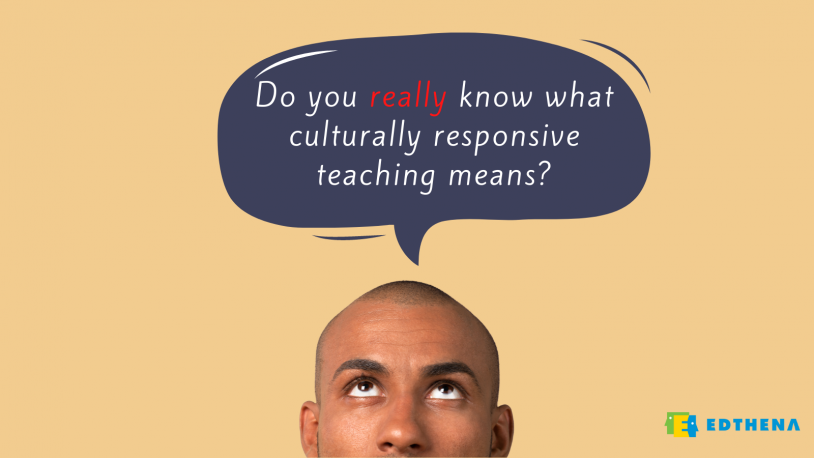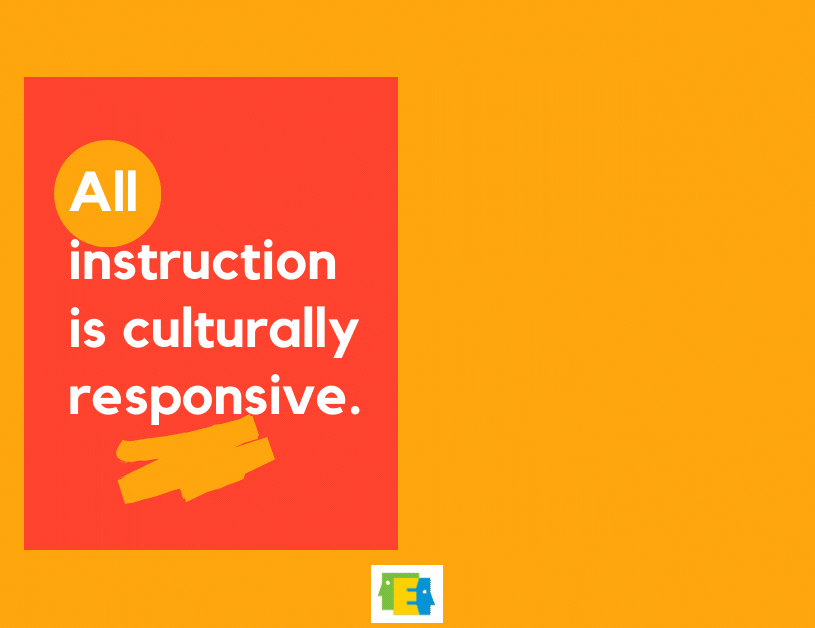Think You Know What Culturally Responsive Teaching Is? You Might Not
Many educators have heard of culturally responsive teaching, but do they really know what that entails? The term is often incorrectly used interchangeably with other classroom pedagogies and practices such as trauma-informed care.
According to Zaretta Hammond, author of Culturally Responsive Teaching and the Brain, culturally responsive teaching is distinctly different from trauma-informed care and anti-racist education, and it is also not one specific strategy that teachers can pick up and implement “tomorrow.”
Culturally responsive teaching is a framework and approach for how to teach.
Zaretta talked with Edthena founder and CEO Adam Geller in this PLtogether Lounge Talk, and the two discussed the meaning of culturally responsive teaching and what it looks like in practice.
Watch the interview above, and read on for highlights of the conversation.
So, what is culturally responsive teaching?
Culturally responsive teaching (CRT) is often talked about in terms of classroom social-emotional learning, building teacher-student relationships, or motivating students.
Citing the researcher Dr. Gloria Ladson Billings, who coined the term, Zaretta framed culturally responsive teaching as teaching with students’ “academic prowess” at the center.
Zaretta Hammond defines the practice as “changes in instruction that actually increase students’ cognition.”
“I call this getting [students] ready for rigor so that they can carry more of the cognitive load.”
How to achieve this? Zaretta noted that students’ brains must be “calm and ready.”
Perhaps the change in instruction required are changes in your behavior management techniques or helping students stay focused and learn how to persevere through challenges.
Culturally responsive teaching isn’t simply getting students motivated to learn, but the instructional practices that will allow them to feel stress-free enough to turn their attention to learning.
Culturally responsive teaching accelerates student achievement
After learning the meaning of CRT, it can be tempting to add it as a to-do on the teaching task list. Zaretta warned against the myth that being culturally responsive is a one-off checkbox for educators.

“This is where we kind of get ourselves in trouble. We think it’s … plug and play. I do it, I don’t do it,” said Zaretta.
But culturally responsive teaching is not a switch that is simply turned on or off.
Rather, Zaretta stated, “All instruction is culturally responsive. The question is to whose culture is it responding?”
Therein is the key to how culturally responsive teaching is, as Zaretta reinforced, “the antidote to inequity.”
Often, a curriculum may be aligned to the culture of the curriculum writers. Or, sometimes teachers connect their teaching to only their own experiences which, intrinsically, orients the instruction to their own culture.
However, classrooms are made up of myriad cultures, and students can feel disconnected if teachers do not make the effort to respond to those unique differences. When students feel safe and connected, stemming from culturally responsive teaching, stress hormones are reduced and brains are more primed for learning.
Addressing inequity in schools by being culturally responsive
Zaretta Hammond reminded us of the inequities that exist in American education: “We go into schools and we see Black and brown kids being those kids chronically at the lower end of achievement than we want.”
Culturally responsive teaching addresses those inequities. Helping students strengthen their “learning muscles” and “capacity to take on more rigorous content” is what Zaretta Hammond said is necessary to accelerate learning.
The changes in teachers’ instruction that support students cognitively are rooted in creating a classroom culture of connection between teachers and students and the community.
Zaretta stressed the importance of teachers getting “input from families, from the students, from communities, to say, this is what makes us feel a sense of belonging and connectedness. Classrooms where teaching and relationships are grounded in connection enable students to learn more.
As we continue to learn about the stressful impacts of the pandemic and other current events, we look to trauma-informed care and anti-racist action for students. These are also integral practices to weave together with culturally responsive teaching. They are not interchangeable, but rather act in concert with each other.
Combined, the practices support stress reduction for students and foster positive relationships, allowing cognitive skills to activate.
To teachers, Zaretta cautiously reaffirmed, “You can layer on a culturally responsive practice [to anything], but you’d have to be deliberate about that.”
Culturally responsive teaching is a complex topic and we’ve only scratched the surface here. Be on the lookout for the rest of our interviews with Zaretta Hammond for more important discussions about the subject.
As for now, we’ll leave you with this:
As back-to-school season gets underway, it’s an important time for educators to reflect: whose culture are you responsive to in your classroom?
To see our other interviews with Zaretta Hammond, head over to PLtogether.org.


